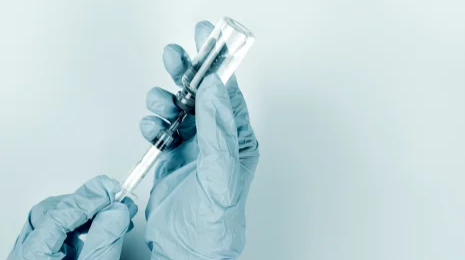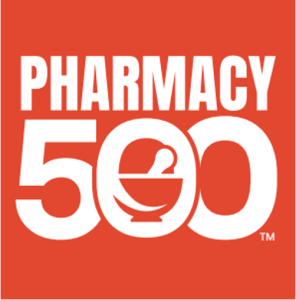Introduction
Safety is always a top priority for pharmacists, and an important component of it is sterile compounding. This involves the safe and sterile preparation of medications in a clean environment to prevent contamination.
Compounded medications help meet the unique needs of patients who may not have access to the correct treatment regarding specific dosing or concentration requirements. Incorporating certain standards helps deliver optimal patient care.
That’s why the United States Pharmacopeia (USP) established USP 797 guidelines to outline how sterile compounding should be conducted. Read on to learn more about the USP 797 guidelines and their importance in healthcare.
Understanding the USP 797 Guidelines
United States Pharmacopeia (USP) 797 compliance is determined by a set of guidelines that ensure patient safety and help avoid the spread of microbial contamination while compounding sterile preparations (CSPs). Understanding the USP 797 guidelines will guarantee individuals are compliant when creating CSPs. The standards cover personnel obligations, engineering/facility design, and environmental controls to guarantee patients receive quality drugs.1
The recent revisions to USP 797 standards mirror the advancements in science and clinical practice to help promote the disbursement of quality products to patients.2 As of November 1, 2022, the revisions were published and are required to be effective as of November 1, 2023. New regulations will include changes including the number of components used during compounding, beyond-use dates, and new expectations for training and competency.3
All About Sterile Compounding
The USP 797 section includes information all about sterile compounding with the overall goal of being how to alter a drug or bulk drug substance to create a sterile medication. A sterile compound is one free of microbial contamination, excessive bacterial endotoxins, variation in strength or ingredients, physical and chemical incompatibilities, and/or the use of poor-quality ingredients. On the other hand, non-sterile compounding does not yield a sterile product and is used to create dosage forms like capsules, tablets, solutions, suspensions, and many more. Aseptic procedures, specific environmental conditions, and approved labeling are required techniques used when preparing sterile preparations to minimize the risk of contact with nonsterile particulates.
Sterile preparations can be prepared in compounding pharmacies that are located within inpatient pharmacies, certain outpatient pharmacies, or at their own compounding facilities. Pharmacists, pharmacy technicians, and pharmacy interns can prepare the sterile compounds as long as they show competency in the aseptic technique and complete thorough training.
Examples of specific training requirements include the incorporation of beyond-use dates, demonstration of proficiency in core competencies like garbing and hand hygiene, and aseptic manipulation training.
Beyond-use dates are an integral part of USP that reflect the date on which the compounded substance must not be used and thus discarded. It was previously determined by the date that the preparation of the compounded sterile preparation is initiated and the medication’s level of risk.4 These guidelines have been further looked at during the recent revisions of the chapter. Now, USP is focusing on where the preparation was made rather than the levels of risk associated with the compounded preparation. There are two categories – category one includes drugs prepared in any primary engineering control in a specific compounding area with no ISO requirements. Category two includes drugs that have been prepared in any primary engineering control that is in an ISO-classified buffer room with a HEPA air filter system and buffer room. A category one preparation will receive a BUD of 12 hours or less at room temperate or 24 hours or less refrigerated. Category two preparations receive BUDs of over 12 hours at room temperature and greater than 25 hours refrigerated.5
Tips for the Implementation of USP 797 Guidelines
Tips for the implementation of USP 797 guidelines begins with pharmacies and pharmacists ensuring they are complacent and knowledgeable of the guidelines. This may include staying up to date with your specific State Board of Pharmacy’s laws surrounding compounding, developing a strong USP compliance plan at your practice site, and regular staff training during onboarding and routinely thereafter.
Many state boards of pharmacy require USP general chapter compliance, which the Joint Commission, a non-profit accreditation organization, further enforces. This requirement is not only for USP chapter 797 but also chapter 795 (non-sterile compounding) and chapter 800 (hazardous medication compounding). The Joint Commission inspects sterile compounding facilities at least every three years for a renewal of accreditation which is why implementation of the guidelines is so important.5
Developing and implementing a sterile compounding plan begins with understanding and explaining the USP 797 standards. This is followed by providing specific and attainable steps that your facility and staff can incorporate to meet these practices ensuring successful implementation of compliance.6
Important competencies to test are hand hygiene, garbing, gloved fingertip thumb sampling, and media fill testing every six months and demonstration of competency in appropriate sterile compounding areas annually. Important topics to include in yearly training consist of antiseptic compounding, disinfection, appropriate garbing, protecting of staff from hazardous materials, maintaining compounded sterile preparations (CSPs) in an ISO 5 environment, proper aseptic handling of high-risk CSPs, and proper labeling and packaging.
Conclusion
The ultimate goal of USP 797 is to ensure compounded products retain sterility and quality when catering to patients with unique needs. It is important that the pharmacist or person in charge at each healthcare facility is well-rounded in regard to USP guidelines to secure compliance with the standards and prevent passing contamination from products to patients.








